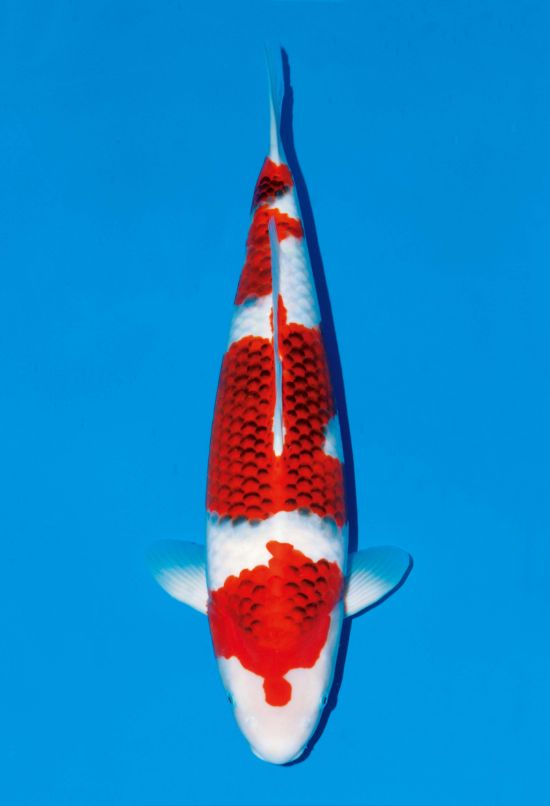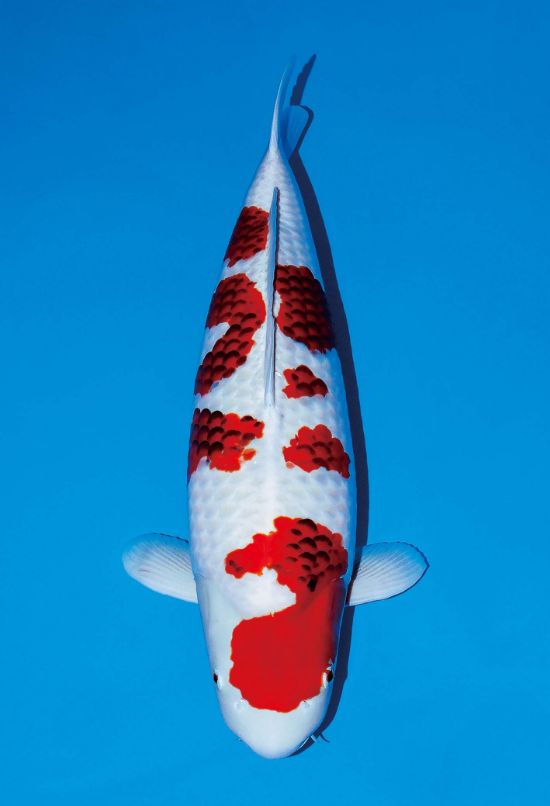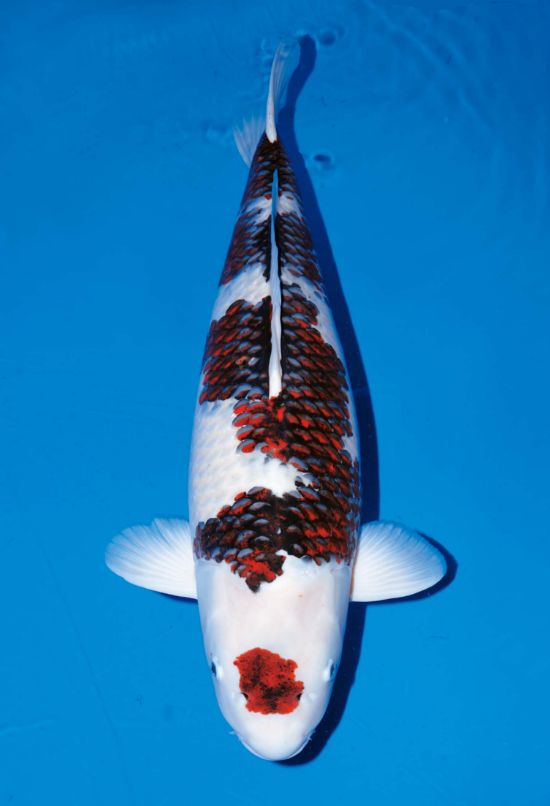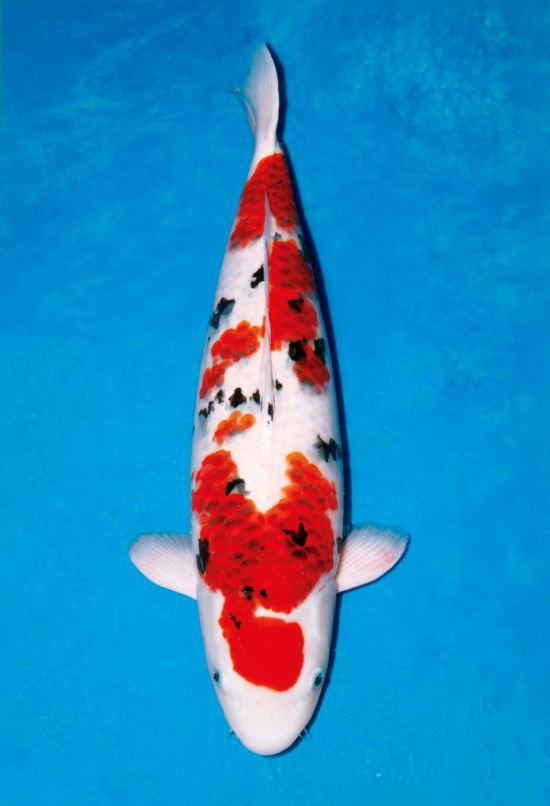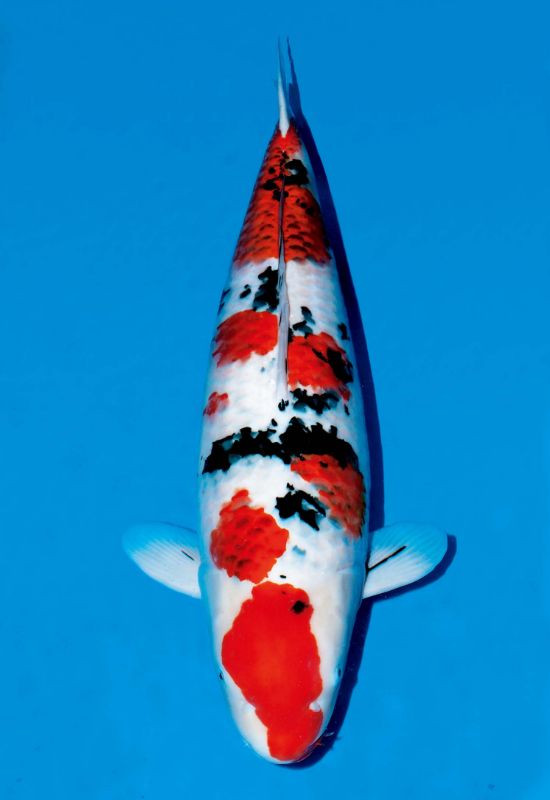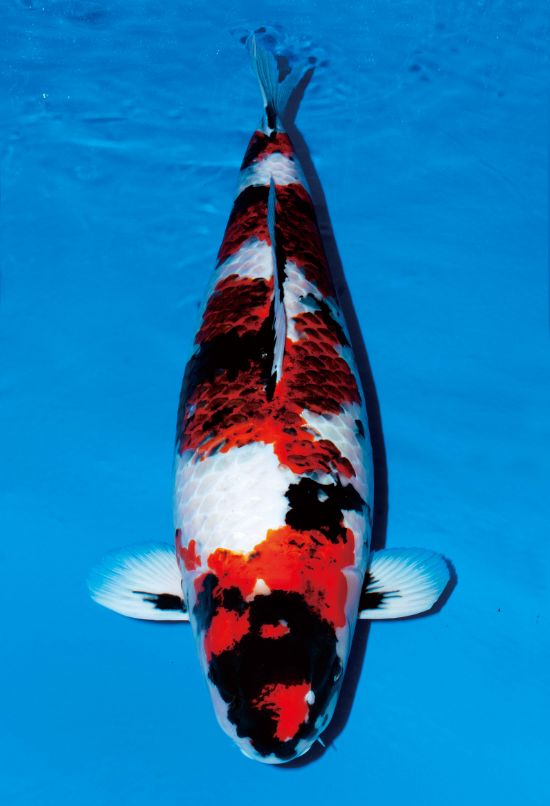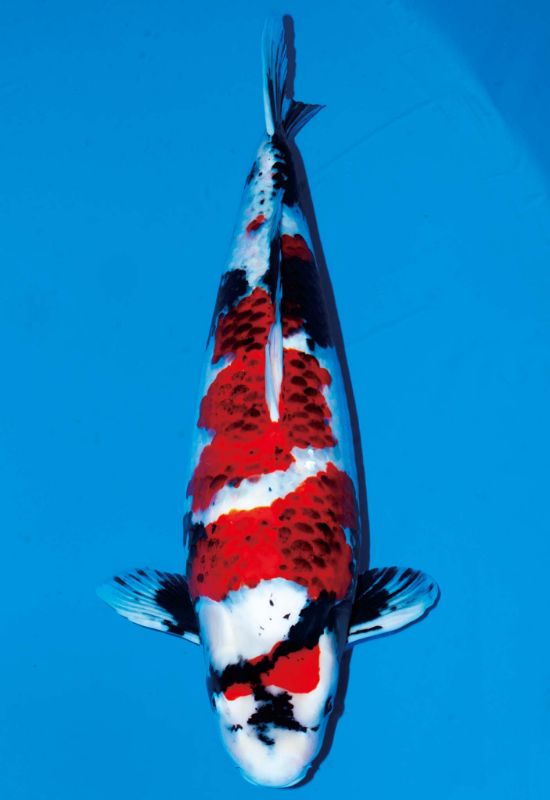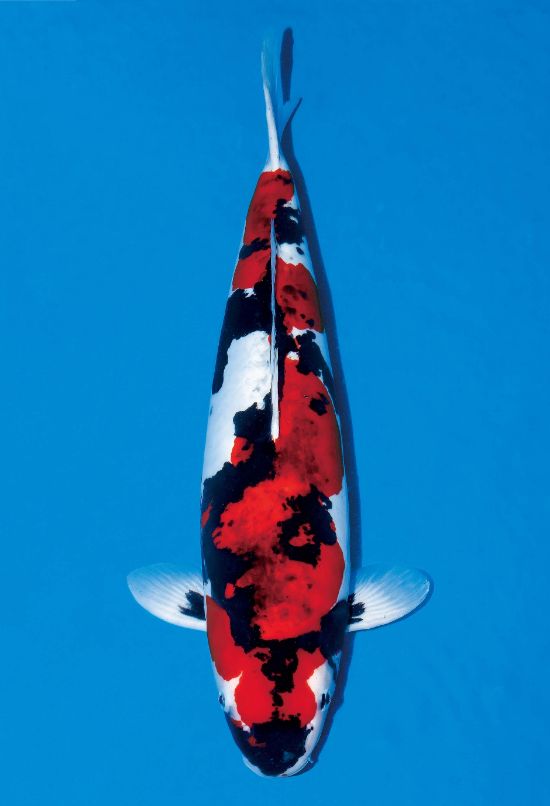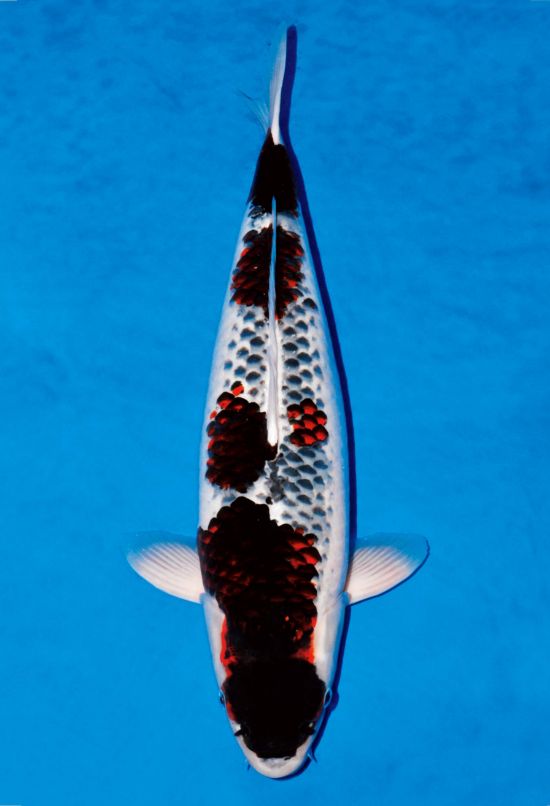Koromo
Koromo is an improved variety of Kohaku, and the tip of the red scales is half-moon shaped and dyed indigo or black. It was named Koromo because of the pattern of the scales. There are varieties called Ai-goromo and Budo-goromo depending on the color of the pattern on the body. In addition, there are Koromo-sanshoku, in which indigo is layered over the color pattern of Taisho-sanshoku, and Koromo-showa, in which the color pattern of Showa-sanshoku are layered with indigo.
Good koromo is considered to have a red and white pattern with each red scale and a uniform crescent-shaped indigo base.
- JAS No.2013 Koromo
- Koromo has scarlet imprints across the body, the tips of the scales on the scarlet imprints are dyed indigo or black in a half-moon shape. It is similar to Goshiki, but it can be distinguished from the fact that Koromo does not have an ”asagidi" pattern on the white part of the body.
Ai-goromo
Ai-goromo has a white body, and there are scarlet imprints across the body. The tips of the scales on the scarlet imprints are dyed indigo in a half-moon shape.
Budo-goromo
Budo-goromo has a white body, and there are reddish brown imprints across the body. It has a black pattern of grape tufts throughout the imprints.
Koromo-sanshoku
Koromo-sanshoku has the appearance characteristics of the Taisho-sanshoku, and has a half-moon-shaped scale that is dyed indigo on the scarlet imprints.
Koromo-showa
Koromo-showa has the appearance characteristics of the Showa-sanshoku, and has a half-moon-shaped scale that is dyed indigo on the scarlet imprints.
Doitsu-koromo-showa
Doitsu-koromo-showa has almost no scales on the whole body and the skin is exposed, and has the appearance characteristics of koromo-showa.

